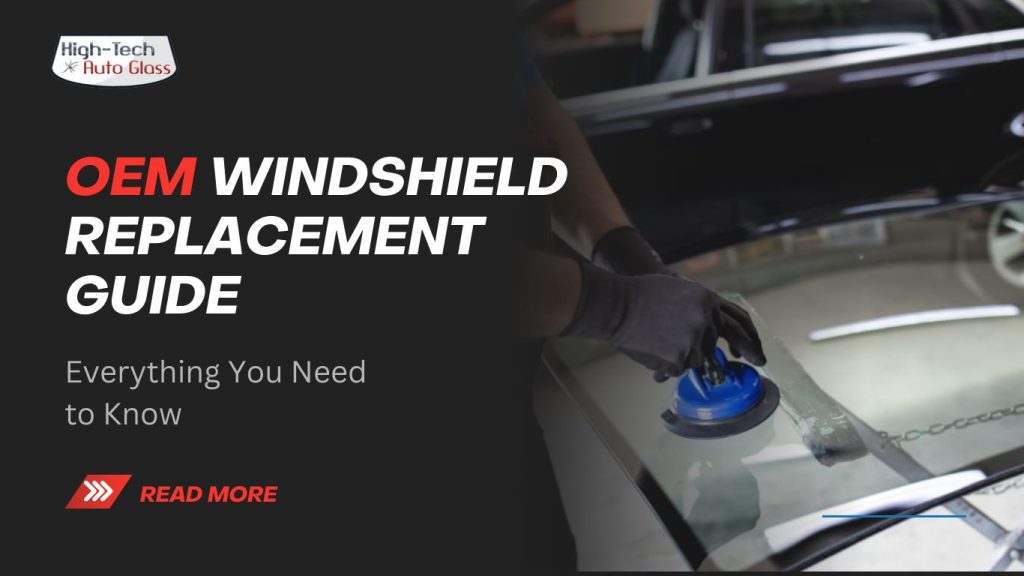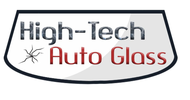OEM Windshield Replacement Guide: Everything You Need to Know

What is an OEM Windshield?
An OEM windshield (Original Equipment Manufacturer) is made by the same company that supplied the factory windshield when your car was first built. This means it’s designed to fit your vehicle perfectly, offering the same OEM quality and compatibility with features like cameras and sensors.
The Importance of OEM Windshield Replacement
A windshield does more than provide visibility, it’s a crucial component of your car’s safety and overall performance. Here’s why selecting an original windshield replacement is beneficial:
- Enhanced Safety: An OEM windshield replacement meets rigorous safety standards set by the manufacturer, ensuring optimal protection in case of an accident.
- Seamless ADAS Integration: Many modern cars come equipped with Advanced Driver Assistance Systems (ADAS), such as automatic braking and lane departure warnings. Using an OEM glass replacement ensures these features function as intended.
- Structural Support: The oem windscreen contributes to the vehicle’s integrity, helping to maintain its strength and preventing structural compromise in the event of a rollover.
Who Should Opt for an OEM Windshield?
If your vehicle is relatively new and comes with ADAS features, like lane departure assist or emergency braking, an OEM windshield is the best option to ensure these systems function accurately while preserving the vehicle’s original build quality.
Moreover, if your car is still covered under a manufacturer warranty, choosing an OEM windshield replacement is typically advised to prevent potential warranty disputes.
Key Benefits of Choosing an OEM Windshield:
- Ideal for Modern Vehicles: If your car is equipped with advanced features, an OEM windshield is the best choice to maintain the intended functionality of sensors and cameras.
- Warranty Protection: Opting for an OEM windshield replacement ensures compliance with original equipment replacement requirements, minimizing potential warranty conflicts.
- Precise Fit & Durability: An OEM glass replacement is specifically designed for your vehicle, providing an exact fit while upholding OEM quality safety benchmarks.
Who Might Consider an Alternative Windshield?
- Owners of Older Cars: If your car lacks ADAS features, an aftermarket windshield could be a cost-effective alternative without compromising safety.
- Budget-Conscious Drivers: Since OEM windshield replacement cost tends to be higher, those seeking a more economical solution may consider aftermarket glass as a viable option.
Choosing an OEM windshield replacement guarantees that your vehicle maintains its safety, technology, and manufacturer-specified standards, ensuring both reliability and peace of mind.
Is It Worth Getting an OEM Windshield Replacement?
When Should You Choose an OEM Windshield?
An OEM windshield replacement is the best option if:
- You want a perfect fit that matches the original OEM quality of your car.
- Your vehicle has Advanced Driver Assistance Systems (ADAS) like lane departure warning or automatic braking, which require precise calibration with the windshield.
- Your car is still under manufacturer warranty, and using an aftermarket windshield might void it.
- You prioritize safety and durability, as OEM glass meets strict manufacturer standards.
Situations Where an Aftermarket Windshield May Be Acceptable
While OEM windscreen replacements offer superior quality, there are cases where an aftermarket windshield could be a suitable alternative:
- If your vehicle does not have ADAS features, reduce the need for precise sensor calibration.
- You’re on a budget and looking for a more cost-effective option.
- Your insurance does not cover OEM windshield replacement cost, and you prefer a cheaper alternative.
- You drive an older car where an original windshield replacement is no longer available or necessary.
Does an OEM Windshield Last Longer?
- OEM windshields are built using the same materials as your factory windshield, ensuring consistent quality and durability.
- Aftermarket windshields vary in quality some may last as long as OEM glass replacement, while others might develop distortions, leaks, or cracks over time.
- Proper installation and maintenance play a crucial role in the longevity of any windshield.
How to Identify If You Have an OEM Windshield
Where to Find Manufacturer Markings on Your Windshield
One of the easiest ways to determine if you have an OEM windshield is by looking for manufacturer markings on the glass. These are usually located in one of the corners and include:
- A logo or brand name matching your car manufacturer.
- A series of letters and numbers that identify the glass as an OEM glass replacement.
- A DOT (Department of Transportation) code, confirming it meets safety standards.
Checking for DOT Codes, Logos, and Certification Labels
Every OEM windscreen comes with a DOT number assigned by the manufacturer. You can verify its authenticity by:
- Looking for a DOT code that identifies the glassmaker.
- Checking for a certification label, ensuring the windshield meets original safety standards.
- Cross-referencing the part number with your vehicle’s original equipment replacement specs.
Differences in Clarity, Thickness, and Material Quality Between OEM and Aftermarket Glass
An OEM windshield replacement is designed to match the exact specifications of your factory windshield, ensuring:
- Consistent thickness: Aftermarket windshields may be slightly thinner, affecting durability.
- Optical clarity: OEM glass is engineered to reduce distortion and improve visibility.
- Material quality: OEM glass is tested for OEM quality standards, ensuring better impact resistance and longevity.
Insurance and Warranty Considerations
Does Insurance Cover OEM Windshield Replacements?
An OEM windshield replacement is designed to match the exact specifications of your factory windshield, ensuring:
- Consistent thickness: Aftermarket windshields may be slightly thinner, affecting durability.
- Optical clarity: OEM glass is engineered to reduce distortion and improve visibility.
- Material quality: OEM glass is tested for OEM quality standards, ensuring better impact resistance and longevity.
How to Ensure Your Policy Includes OEM Glass
If you prefer an OEM windshield replacement, here’s how to confirm your policy covers it:
- Check if your policy mandates OEM glass or allows aftermarket alternatives.
- Request an OEM endorsement if it’s not automatically included.
- Understand claim limitations, some policies cover oem quality parts only for newer vehicles.
OEM Windshield Replacement Warranty: What’s Covered?
A proper OEM glass replacement warranty should include:
- Glass coverage: Protection against defects in material and manufacturing.
- Installation warranty: Covers issues like water leaks, wind noise, or cracking due to improper installation.
- Repair quality: Ensures factory windshield components like defrosting lines and radio antennas work correctly.
When to Claim Insurance vs. Pay Out-of-Pocket
- Claim insurance if: The cost of an OEM windshield replacement is higher than your deductible.
- Pay out-of-pocket if: Your policy only covers aftermarket glass, but you want the best windshields for cars.
- Consider resale value: OEM windshields may help retain the oem quality of your vehicle and increase its resale value.
Cost Considerations: OEM vs. Aftermarket Windshields
- OEM Windshields: Higher cost due to manufacturer standards but ensure perfect fit and longevity.
- Aftermarket Windshields: Lower cost but may differ in quality, thickness, and fit.
Other Factors to Consider
- Vehicle Age: Newer and luxury vehicles benefit from OEM glass replacement.
- Long-term Quality: If durability, fit, and original equipment replacement matter to you, OEM windshields are the safer choice.
How to Maintain Your OEM Windshield for Longevity
Proper Cleaning Techniques to Prevent Scratches
Keeping your OEM windshield clean is essential for clarity and longevity. Follow these steps:
- Use a high-quality glass cleaner that is ammonia-free to avoid damage.
- Wipe with a microfiber cloth to prevent scratches.
- Clean both the inside and outside regularly to maintain high-quality visibility.
How to Protect OEM Glass from Cracks & Chips
- Avoid sudden temperature changes – Parking in direct sunlight or using hot water on a frozen windshield can weaken the glass.
- Keep a safe distance from large vehicles – Rocks and debris kicked up on highways can cause small chips.
- Fix small chips immediately – Small damage can spread, requiring a full oem windshield replacement instead of a minor repair.
Do OEM Windshields Require Special Maintenance?
While OEM glass replacement doesn’t require extensive care, these practices will help:
- Replace windshield wipers regularly to avoid scratches from worn-out blades.
- Be gentle when closing car doors, especially right after an original windshield replacement, to avoid excess pressure.
- Inspect your windshield frequently to spot early signs of damage.
When Should You Replace Your OEM Windshield Again?
If cracks obstruct your vision or reach the edges of the glass, it’s time for a factory windshield replacement.
- ADAS-equipped vehicles require recalibration when replacing a windshield, ensuring safety and performance.
- If you notice distortions, leaks, or structural weakening, opt for an OEM windshield replacement to maintain original standards.
Conclusion
Choosing the right windshield replacement is Important for maintaining your vehicle’s safety, functionality, and value. An OEM windshield replacement ensures a perfect fit, ADAS compatibility, and long-term durability, making it a preferred choice for many drivers. Whether you prioritize oem quality, manufacturer compliance, or preserving your car’s resale value, selecting the right glass matters.
If you need expert windshield services, High-Tech Autoglass is your trusted provider for Windshield Replacement Phoenix. With years of experience in OEM glass replacement and auto glass repairs, they specialize in precise installations and premium windshield solutions. Serving Arizona and Phoenix, their team ensures your vehicle gets the highest standard of safety and quality.
Don’t compromise on your windshield’s integrity. Contact High-Tech Autoglass today for professional OEM windshield replacement services and keep your vehicle in top condition with the best windshields for cars.
Frequently Asked Questions
Does Insurance Cover OEM Windshield Replacement?
It depends on your auto insurance policy. Some insurers cover OEM windshield replacement, but others may only cover aftermarket glass unless you have OEM parts coverage. To be sure, check your policy details or speak with your insurance provider.
Can I Replace My Windshield with an OEM One Myself?
Replacing an OEM windshield requires precise installation and recalibration, especially for ADAS-equipped vehicles. It’s best to have a professional handle the OEM glass replacement to ensure proper fit, safety, and functionality.
Will an OEM Windshield Improve Resale Value?
Yes, an original windshield replacement can help maintain your car’s value. Buyers often prefer vehicles with OEM quality parts, as they ensure proper safety standards and performance.
How Do I Find a Certified Shop for OEM Windshield Replacement?
To find a reputable service provider:
- Look for an OEM-certified auto glass shop.
- Check reviews and ratings to ensure quality service.
- Confirm that they offer factory windshield replacements and proper ADAS recalibration.
Are All OEM Windshields Made by the Same Manufacturer?
No, different car brands may use different suppliers for their OEM windscreens. However, all OEM glass must meet the automaker’s specifications for safety and quality.
How Long Does It Take to Replace an OEM Windshield?
The time required for an OEM windshield replacement depends on the vehicle and recalibration needs. Generally, installation takes about 60-90 minutes, while ADAS recalibration may add extra time.
Does an OEM Windshield Reduce Wind Noise?
Yes, an OEM windscreen is specifically designed for your car model, ensuring a tight seal that reduces wind noise and improves driving comfort compared to some aftermarket windshields.
Can I Drive Immediately After an OEM Windshield Replacement?
Most auto glass professionals recommend waiting at least one hour after an OEM glass replacement before driving to allow the adhesive to set properly. For full curing, follow the installer’s instructions.
